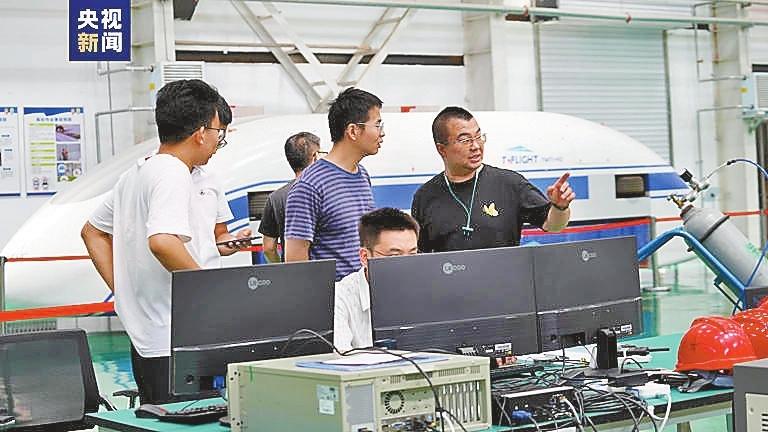
AN ultra-high-speed low-vacuum tube maglev transport system, also known as the “high-speed flying train,” with a maximum travel speed of 1,000 kilometers per hour, has completed a successful test in Yanggao County, Datong, North China’s Shanxi Province, China’s State TV reported. Representatives from the project said that the test, conducted in a 2- kilometer low-vacuum tube and overseen by provincial officials and a jury of tech experts, was a success, signifying that the project will move to the next phase. The test performance and results were in line with designed goals and technical specifications, including magnetic suspension height of the train, stability and controllability, performance of the brakes, and maximum travel speed. Magnetic levitation lifts a train car above a track, as the magnets’ like poles push the train upward. The magnets also propel the train as like poles repel and push the train forward, and the opposite poles attract and pull the train forward. Magnetic levitation has been used on some train systems since the 1970s. The flying train may be deployed on commuter routes in mega-city clusters. It could shorten the travel time between Beijing and Shanghai to as little as 90 minutes, according to Chinese media reports. Zhang Sun, a railway expert at Shanghai Tongji University, said the test was a milestone in tech development that combines railway with aerospace technologies, as quoted by the Global Times. Zhang also pointed out that there is still a long way to go before this technology can be applied to daily life, especially in terms of safety. The test line, co-built by Shanxi’s government and China Aerospace Science and Industry Corporation, took 19 months to construct and was completed in November 2023. The concept of a transportation system in a low-pressure tube was proposed in 2013 by Tesla and SpaceX CEO Elon Musk, who called it Hyperloop, but his company focusing on developing the system — Hyperloop One — was shut down at the end of 2023, according to media reports. The official website of U.K.-based Virgin showed that its Virgin Hyperloop made its first successful passenger test in 2020. Analysts said that it is hard to predict which country will be the first to operate a high-speed maglev train, but it is more practical to make such systems profitable in China, which has a huge population and a solid foundation in rail transport. As of the end of 2023, the length of China’s railways in commercial operation reached 159,000 kilometers, with more than 45,000 km of the total being high-speed lines, official data showed. (SD-Agencies) | 
